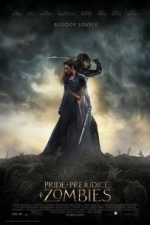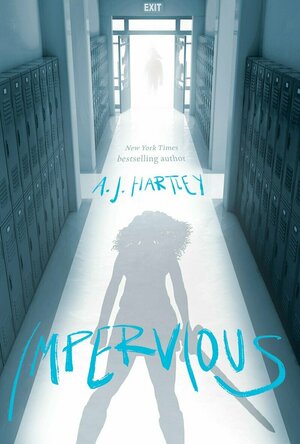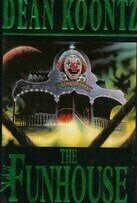LeftSideCut (3776 KP) rated Pride and Prejudice and Zombies (2016) in Movies
Jan 30, 2020 (Updated Jan 30, 2020)
The book was released a fair while back now, and it's a shame that a film adaption took so long to materialise - by 2016, countless 'quirky' zombie movies in a similar vain had saturated the market, and what we're presented with is a film that tries reasonably hard to be something 'out there' but ultimately feels uninspired.
The main issue I found with PPZ was the actual zombie side of things! The zombies themselves looked great, the make up used is gruesome and effective, but the scenes of horror are seldom, and just quite boring. The final act sees a massive horde introduced into the narrative, but said horde probably gets less than two minutes screen time.
The actual Pride and Prejudice side of things felt way more fun.
The cast is pretty strong, even if a few of the characters are insufferable. Lily James is a great lead as Elizabeth Bennet. Her and her sisters make for a strong band of kick-ass zombie slayers. Sam Riley as Mr. Darcy took a (really) long time to win me over, but I actually ended up enjoying him as well.
Lena Headey is entertaining as a badass eyepatched version of Lady Catherine, and it's clear in moments like this that PPZ is just a bit of fun horror comedy fluff that shouldn't be taken too seriously.
The undisputed highlight of the cast is Matt Smith though. His comedic timing is on point and got a few genuine laughs out of me.
Another thing I found frustrating is the story that we weren't being told...the film opens with an animated story book style flashback of how the zombie apocalypse came to be, and what happened in the ensuing chaos. Even the soothing tones of Charles Dance can't distract me from the fact that this exposition dump sounds like a far more interesting story!
Couple that with the fact that we only get glimpses in the distance of a zombie infested flaming London completely surrounded by a massive concrete wall, and you can't help but feel that the film is a bit of a missed opportunity.
Oh well - here's hoping we get a Sense and Sensibility and Sea Monsters adaption somewhere down the line!
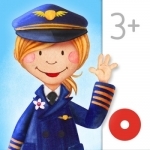
Tiny Airport - Interactive Activity App for Kids
Book and Education
App
Discover the airport: In three scenes featuring around 90 interactive adventures and chances to...
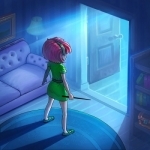
Ghost Town: Mystery Match Game
Games and Stickers
App
Epic journey leads you in abandoned township to help the cute local characters. Exciting plot about...

Scotland Marco Polo Guide
Book
Marco Polo Scotland: the Travel Guide with Insider Tips Experience all of Scotland's attractions...
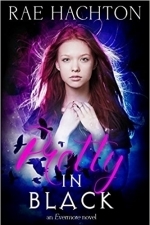
Pretty in Black: Pretty in Black Book 1
Book
On the day of her death, a seventeen year old cheerleader meets a vampire in the cemetery who saves...
fantasy young adult
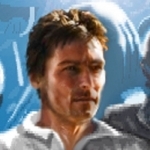
The Escapee
Games and Entertainment
App
AWARD WINNING CLASSIC ACTION & ADVENTURE IS AVAILABLE ON IPHONE, IPAD AND IPOD TOUCH!...

3D Printing with Autodesk: Create and Print 3D Objects with 123D, AutoCAD and Inventor
Book
3D Printing with Autodesk Create and Print 3D Objects with 123D, AutoCAD, and Inventor Create...
BookishWoo (317 KP) rated Impervious in Books
Jul 12, 2020
Don’t get me wrong, on the face of it, Impervious is a Fantasy story. You find yourself wrapped up in a Quest with cleverly thought out nods to legends we oh so love. King Arthur, Excalibur and The Lady of the Lake, are those that struck me the most. With bone chilling monsters thrown into the mix.
As I got further into it, I realised there is something underlying, running parallel that you need to scratch, no dig under the surface to find.
It’s that scab that you just have to pick at (no intentions to gross anyone out there, but its the best analogy I can think of at the moment)
It’s not until close to the end that I had that Eureka moment. It was at that moment my heart was wrenched from my chest and the full force of the story hit me like a ton of bricks.
I have no doubt that some of you will have you “Ah Ha” moment a lot earlier than me. I was so wrapped up in the quest that I literally could not see the woods for the trees. But that’s OKAY! I am glad I didn’t figure it out, it kinda would have spoilt it for me.
Trina our protagonist, who pretty much has the full focus throughout, with reason, is just so god damn likeable. Lets give it up for Girl Power!
She takes everything in her stride, or so you are led to believe. Im having to be so careful I don’t give anything away here!
With that said, I am going to just leave you with this……….
This is a well written book, with a truly intricate plot within a plot. Delving into the Psyche and coping mechanisms of a teenage girl. A story with a deep message!
I received my copy from Love Books Group, A.J. Hartley and Uclan Publishing in exchange for an honest review.
Jesters_folly (230 KP) rated The Funhouse in Books
Nov 11, 2020
I found the Funhouse to be a little disappointing, the majority of the book spends it's time building up to a big confrontation between Conrad, the main antagonist and Amy. Over 200 something pages we switch between finding out how Conrad is searching for Amy and what he will do to her to get revenge on her mother and how the past has already affected Amy's mother only for the final confrontation to take around 10 pages, most of which Conrad is not involved in the action and, when he does show up he's dealt with in a couple of sentences.
In the edition I read there is an afterword by Dean Koontz where he explains the history of the book, it was to be a book based on a film and, he had hoped that it would be the fist of many which is why it was written under the pseudonym Owen West. One thing the author says is that, because he had to work form a film script there wasn't much in the way of character building and so he had to spend time working on the back story. And I think that's part of the problem, the book shows us how events in Amy's mother's past have affected her mothers out look on life and her children and we see how the same events led Conrad down his path of revenge but the book ends with Amy and her brother leaving the fun house after escaping Conrad, which is probably the films end, the protagonist deals with the bad guy, walks away and cut to credits. However, with all the time spent on the character building I felt like we, the reader could have done with a bit more, probably only one more chapter but I would have liked to know how Amy's mother would have reacted when she found out what Conrad had done (As the book ended she didn't even know Conrad was around) and how it would have changed her outlook on her family. Would she have found the peace and forgiveness she was looking for? and would she stop treating her own children as monsters?
Over all 'The Funhouse' had it's moments but the felt like a let down with its quick ending.
